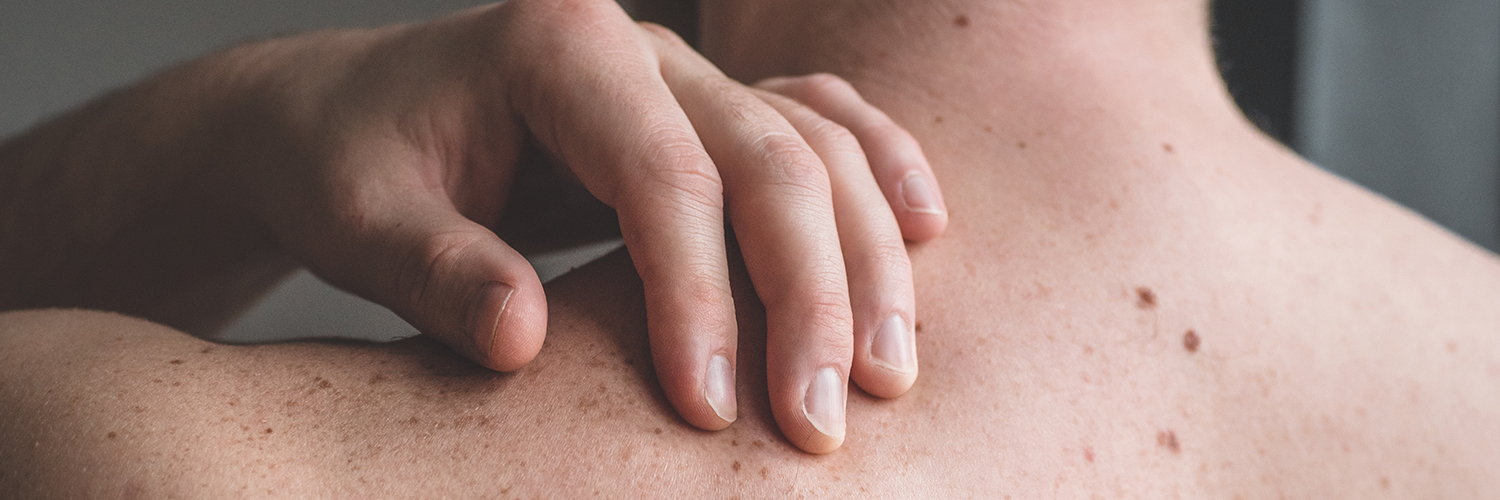While most moles are harmless, an itchy one can be concerning, especially if it’s new or has changed in appearance. If you have an itchy mole, it’s important to watch for signs that suggest you should see a dermatologist for proper evaluation and treatment.
Are Itchy Moles Harmful or Harmless?
Moles typically aren’t itchy, although it’s considered normal for moles to occasionally itch due to factors like:
- Dry skin
- Irritation from clothing or jewelry
- Shaving
- Exposure to environmental allergens
If the itching goes away on its own, the mole isn’t new and it doesn’t grow or change, the mole is most likely not something to be concerned about.
But if the itching persists or gets worse, or if the mole becomes red, swollen, or starts to bleed and change in size and appearance, it may indicate a more serious issue and warrants a visit to a dermatologist.
A bleeding or itchy mole, especially one that developed after the age of 30, can be a sign of melanoma, the most serious type of skin cancer.
What Causes an Itchy Mole?
Aside from the causes of temporary itchiness described above, other factors that can cause your mole to itch can include:
- Too much sun exposure: Sunburns and excessive sunlight exposure without adequate protection can lead to skin dryness, peeling, damage and mole irritation.
- Changes in hormone levels: Hormone fluctuations, such as during puberty or pregnancy, can sometimes stimulate the growth of moles and cause them to become itchy.
- Melanoma or other skin cancers: Some people who develop melanoma notice that their moles itch. If you have a family history of cancerous moles, be sure to see your dermatologist for regular skin examinations.
When to Seek Help For an Itchy Mole
If you have an itchy mole, monitor the mole for any changes in size, shape or color.
When in doubt, if you notice a new spot that itches, bleeds or grows in size, make an appointment to visit a board-certified dermatologist. If you develop a new mole after age 30, it’s advised that you visit a dermatologist to examine the mole for signs of melanoma.
Additionally, pay attention to any associated symptoms that occur along with itchiness, such as:
- Pain and tenderness near the mole
- Oozing
- Red rash
Monitoring Your Moles
It’s recommended that you check your skin for any signs of changing moles regularly or even daily, which is called a “self-screen.”
Pay careful attention to moles on the back and chest, which are common locations where melanoma develops. People with any history of skin cancer should also have a total body skin examination every year by a physician.
If you notice any concerning signs when monitoring your mole, such as rapid growth, irregular borders or asymmetry, it’s important to see a dermatologist right away for an evaluation.
A dermatologist can perform a thorough examination of the mole and may recommend a biopsy if there are any suspicious features. A biopsy involves removing a small sample of tissue from the mole for microscopic analysis to determine if it’s cancerous or benign. Early detection of skin cancer, such as melanoma, greatly improves the chances of successful treatment and recovery.
If you have concerns about an itchy mole or notice any worrisome symptoms, don’t hesitate to schedule an appointment with a dermatologist. Stony Brook Dermatology Associates are focused on the healing and improvement of adult and children’s skin. Our dermatology team entails the diagnosis and treatment of diseases of the skin including moles, eczemas, rashes, hives, psoriasis, acne, skin infections, blistering conditions and hair loss.












